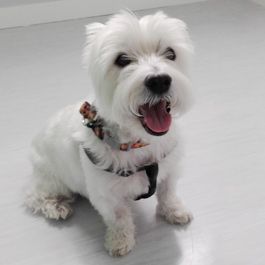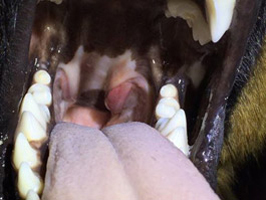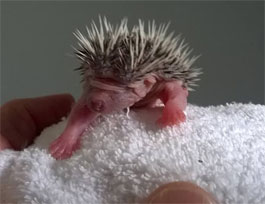Caudal cruciate ligament – a rare injury in a dog!
We’ve had recently lovely Boxer Lady Ella for a visit and diagnosed that her caudal cruciate ligament was ruptured. Ella is a beautiful Boxer pup with extremely good manners.
But before you will learn about her incredible recovery we would like to give you a short introduction into the world of cruciate ligaments. Well as short as it can be.. Cruciate means ‘cross over’ or ‘form a cross’ and the cruciate ligaments are two bands of fibrous tissue located within each knee joint. They join the femur and tibia (the bones above and below the knee joint) together so that the knee works as a hinged joint. The two cruciate ligaments within the dog’s knee are called the cranial and the caudal (anterior and posterior in humans – but essentially the same).
The Cranial cruciate ligament (CrCL) is responsible for the forward stability of the tibia, the caudal cruciate (CaCL) is responsible for the backward stability of the tibia. Due to the fact that a dog walks with a bent knee (we walk with a straight/ vertical knee) there is a shearing force constantly placed during walking due to the orientation of the tibia compared to the femur.
The caudal cruciate ligament does the opposite job to the cranial cruciate ligament. With a CrCL rupture, the femur (thighbone) slips forward since the ligament is not keeping it in place. The caudal cruciate ligament keeps the thighbone from slipping back or sideways.
The rupture of the cranial cruciate ligament is a common problem and is the most common cause of a rear leg lameness in dogs. On the other side, an injury to the caudal cruciate ligament is uncommon.
In general, a medical management of a caudal cruciate ligament rupture can be an option, but only in small dogs or cats that live more inactive. For larger and / or more active dogs a surgical repair is strongly recommended, but a CaCL is not helped by a TPLO or TTA. To stabilize the joint with a CaCL injury surgeons use other techniques like placing sutures outside the joint capsule on either side of the knee or redirecting the medial collateral ligament with help of screws.
Thanks to the skills of our orthopedic team and the team of Total Veterinary Physiotherapy, as well as Ella’s owners Ella made a remarkable recovery.
The caudal crucial ligaments were replaced with suture material, Ella had regularly physio and Ella’s Mum and Dad have been role models in keeping Ella confined. Ella was back to be her bouncy self within a few weeks after her surgery. Go Ella!!



